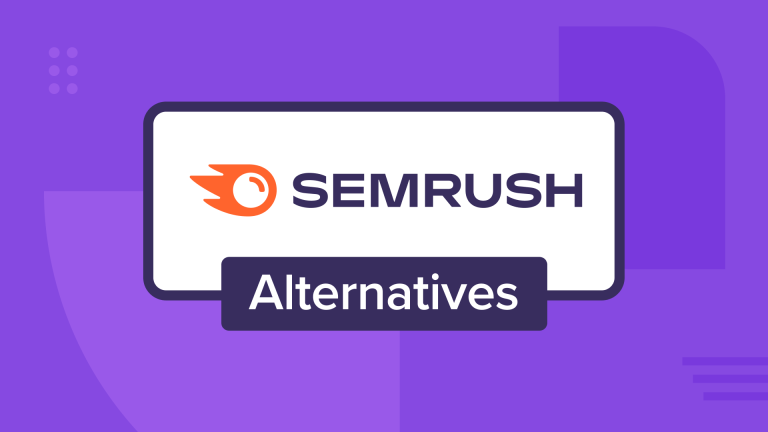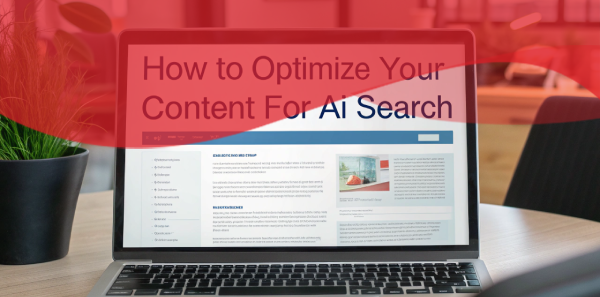Did you know that Google’s latest AI advancements have increased search usage by over 10% in key markets like the U.S. and India? With the rollout of AI Mode, searches are becoming smarter, more intuitive, and deeply integrated with multimodality and advanced reasoning. If you’re wondering how to optimize your website for Google’s new AI algorithm, you’re not alone—many site owners are scrambling to adapt to this shift toward intelligent, AI-powered search experiences.
In this comprehensive guide, we’ll break down what Google’s new AI algorithm means for your online presence, explore the challenges it presents, and provide step-by-step strategies to ensure your content ranks well. Whether you’re a business owner, marketer, or webmaster, these insights will help you stay ahead. Keep reading to learn how you can transform your SEO approach for the AI era.
Understanding Google’s New AI Algorithm: The Rise of AI Mode
Google’s search engine has always been a moving target, but the introduction of AI Mode in May 2025 is a game-changer. Built on Gemini 2.5, this algorithm doesn’t just match keywords—it reasons, integrates multimodal inputs (text, images, video), and delivers conversational, task-oriented results. Unlike traditional search, AI Mode uses techniques like query fan-out to break user queries into subtopics, scouring the web for hyper-relevant content. This shift demands a new approach to SEO, as sites must align with AI’s ability to interpret and cite information dynamically.
Why does this matter? Recent data shows AI Mode has increased user engagement by 12% in markets like the U.S. and Europe, as searches become faster and more precise. For website owners, this means optimizing for Google’s new AI algorithm is critical to staying competitive. Let’s dive into what makes AI Mode unique and how it impacts your site.
Key Features of Google AI Mode
AI Mode introduces capabilities that redefine how users interact with search:
- Advanced Reasoning: The algorithm synthesizes information from multiple sources, creating expert-level answers with citations for credibility.
- Multimodality: Users can search using text, images, or live camera feeds, with AI blending these inputs for richer results.
- Conversational Search: Supports follow-up questions, allowing users to refine queries in real-time, mimicking human dialogue.
- Agentic Capabilities: For tasks like booking flights or shopping, AI Mode navigates forms and compares options across sites.
- Personalized Context: Optionally uses user data (e.g., Gmail or past searches) for tailored suggestions, enhancing relevance.
These features mean your website must be structured and authoritative to be featured in AI-generated responses.
Want to Optimize Your Website for Google’s New AI Algorithm?
Expert SEO Services in Toronto
How AI Mode Differs from Previous Algorithms
Unlike earlier updates like BERT or RankBrain, which focused on understanding language or ranking factors, AI Mode prioritizes utility and intent. BERT improved context for queries, but Gemini’s zero-shot learning allows AI Mode to handle novel or complex questions with unprecedented accuracy. For example, a query like “best laptops for AI programming in 2025” now triggers sub-queries about specs, budgets, and user reviews, requiring content that addresses these facets comprehensively.
This evolution reduces reliance on traditional signals like keyword density or backlink volume. Instead, Google’s AI algorithm rewards content that demonstrates E-E-A-T (Experience, Expertise, Authoritativeness, Trustworthiness), aligns with user intent, and supports multimodal inputs. Sites ignoring these shifts risk losing visibility.
Why Optimizing for AI Mode Is Urgent
The June 2025 core update, which fully integrated AI Mode, caused significant ranking volatility, particularly in YMYL (Your Money or Your Life) niches like finance and health. Industry reports noted a 20% fluctuation in rankings for sites lacking depth or authority. Meanwhile, AI-generated overviews are reducing click-through rates to some sites, as users get answers directly on the SERP. Optimizing your website for Google’s new AI algorithm ensures you’re not just visible but cited as a trusted source.
The SEO Challenges and Opportunities of Google’s AI Algorithm
The shift to AI-driven search introduces both hurdles and advantages for website owners. Understanding these dynamics is the first step to crafting an effective strategy.
Challenges of AI-Driven Search
- Reduced Organic Clicks: AI overviews summarize content, potentially keeping users on Google’s SERP instead of visiting your site. Pages lacking unique value may see traffic drops.
- Increased Competition for Authority: AI Mode prioritizes E-E-A-T, meaning sites without expert credentials or citations struggle to rank.
- Multimodal Complexity: With visual and live search capabilities, sites must optimize non-text elements like images and videos, which many overlook.
- Content Depth Requirements: Thin or outdated content is penalized, as AI favors comprehensive, well-structured pages.
For instance, a health blog saw a 30% traffic drop post-update because its articles lacked cited sources and expert authors, highlighting the need for robust E-E-A-T signals.
Opportunities for Savvy Website Owners
Despite these challenges, optimizing for Google’s AI algorithm opens doors:
- Higher Visibility in Overviews: Well-optimized pages are cited in AI summaries, driving referral traffic even if users don’t click through.
- Long-Term Authority Gains: Building E-E-A-T establishes your site as a trusted resource, insulating it from future updates.
- Multimodal Advantage: Sites with optimized images, videos, and interactive content can capture traffic from visual and live searches.
- Conversational Search Boost: Content answering follow-up questions (e.g., “how to optimize for AI search in 2025”) ranks better in iterative queries.
Data from SEMrush shows that sites using structured data saw a 25% increase in AI overview inclusions post-June 2025, proving optimization pays off.
Common SEO Mistakes to Avoid
Many websites falter by clinging to outdated tactics. Here are pitfalls to sidestep:
- Keyword Stuffing: Overusing “optimize your website for Google’s new AI algorithm” without context triggers penalties.
- Ignoring Mobile Optimization: AI Mode’s live features demand fast, mobile-friendly sites.
- Neglecting Updates: Content not refreshed post-core updates risks irrelevance.
- Skipping Multimodal Elements: Unoptimized images or videos miss visual search opportunities.
By addressing these, you can position your site for success.
Step-by-Step Guide to Optimize Your Website for Google’s New AI Algorithm
Ready to take action? This detailed roadmap will help you optimize your website for Google’s new AI algorithm, with practical steps and examples to ensure success.
Step 1: Perform a Thorough Site Audit
Start by assessing your site’s performance in AI-driven searches. Use Google Search Console to check which pages appear in AI overviews and identify gaps. Focus on:
- E-E-A-T Evaluation: Verify that author bios showcase expertise and pages cite credible sources.
- Technical Health: Check for broken links, slow load times, or duplicate content using tools like Screaming Frog.
- Keyword Alignment: Ensure content matches conversational queries, such as “best AI search optimization strategies.”
Example: A tech blog audited its site and found 40% of pages lacked schema markup, reducing AI visibility. Adding FAQ schema boosted their overview appearances by 15%.
Actionable Tip: Use Ahrefs’ Site Audit to pinpoint crawl errors and SEMrush for keyword gap analysis. Schedule monthly audits to stay proactive.
Step 2: Create In-Depth, Authoritative Content
AI Mode favors comprehensive content that directly answers queries while providing depth. Aim for 2,000–3,000-word pillar pages on core topics, incorporating LSI keywords like “multimodal SEO” and “AI-driven search ranking.”
- Structure for Scannability: Use clear H2/H3 headings, short paragraphs, and bullet points.
- Answer Intent Directly: Start with a concise answer, then expand with examples and data.
- Cite Sources: Link to authoritative sites like Google’s AI Blog to boost trust.
Example: For a query like “how to optimize for Google AI Mode,” a blog post might open with a definition, followed by sections on schema, content depth, and multimodality, citing Google’s documentation for credibility.
Actionable Tip: Use tools like SurferSEO to analyze top-ranking pages and ensure your content matches their depth and structure.
Step 3: Implement Structured Data and Schema Markup
Structured data is critical for AI Mode, as it helps Google’s algorithm understand your content’s context and intent. JSON-LD schema is the preferred format for 2025.
- Key Schemas to Use:
- FAQPage: Enhances visibility in conversational searches.
- Article: Improves citation in AI-generated reports.
- Product: Supports e-commerce and agentic features.
- VideoObject: Boosts multimodal search results.
- Testing Tools: Validate markup with Google’s Structured Data Testing Tool or Schema.org’s validator.
- Entity Optimization: Mark up key entities (e.g., people, products) to align with AI’s semantic understanding.
| Schema Type | Benefits for AI Optimization | Example Use Case | Implementation Tip |
|---|---|---|---|
| FAQPage | Answers conversational queries | Q&A on blog posts | Add 3–5 relevant FAQs |
| Article | Enhances AI report citations | In-depth guides | Include author schema |
| Product | Supports shopping queries | E-commerce pages | Add price, availability |
| VideoObject | Boosts visual search results | Tutorial videos | Include transcript |
Example: An online store added Product schema to its listings, resulting in a 20% increase in AI-driven shopping query visibility.
Actionable Tip: Use plugins like Yoast SEO or Rank Math to automate schema implementation on WordPress sites.
Step 4: Optimize for Multimodality and User Experience
AI Mode’s multimodal capabilities mean your site must support text, images, and videos seamlessly. Focus on:
- Image Optimization: Compress images to under 100KB, add descriptive alt text (e.g., “Infographic on Google AI algorithm optimization”).
- Video Content: Embed videos with transcripts and schema markup for better indexing.
- Core Web Vitals: Aim for Largest Contentful Paint (LCP) under 2.5 seconds and First Input Delay (FID) under 100ms.
- Mobile Optimization: Ensure responsive design for AI Mode’s live search features, like Google Lens.
Example: A fashion retailer added virtual try-on images with alt text like “Virtual try-on for AI shopping,” boosting visibility in visual searches by 18%.
Actionable Tip: Use Google’s PageSpeed Insights to identify and fix Core Web Vitals issues. Test images in Google Lens to ensure discoverability.
Step 5: Build Authority with Links and Citations
AI Mode prioritizes trustworthy sources, so focus on earning high-quality backlinks and internal linking.
- External Backlinks: Publish guest posts on reputable sites like Search Engine Journal.
- Internal Linking: Connect related pages, e.g., link from “/ai-seo-guide” to “/multimodal-seo-tips.”
- Citations: Reference credible sources to enhance E-E-A-T, such as industry studies or Google’s documentation.
Example: A blog on AI tools linked to Google’s AI updates page and earned backlinks from tech forums, improving its domain authority by 10 points in three months.
Actionable Tip: Use Moz’s Link Explorer to track backlink quality and identify opportunities for outreach.
Step 6: Monitor and Adapt to Ongoing Updates
Google’s AI algorithm evolves rapidly, with updates like the anticipated July 2025 core update expected to refine multimodal and agentic features. Stay ahead by:
- Tracking Performance: Use Google Analytics to monitor AI-driven traffic and Search Console for overview inclusions.
- Staying Informed: Follow Search Engine Land or join Reddit’s r/SEO community.
- Testing Content: Experiment with AI Mode previews to see how your pages appear.
Example: A news site updated its articles weekly to reflect AI Mode’s real-time preferences, regaining 15% of lost traffic post-June update.
Actionable Tip: Set Google Alerts for “Google algorithm update” to stay informed and schedule quarterly content refreshes.
Need Website Design Services in Toronto to Optimize for Google’s AI Algorithm?
Advanced AI Search Optimization Strategies
To truly excel, go beyond the basics with these advanced tactics tailored for Google’s AI algorithm.
Leveraging AI Tools for SEO Efficiency
AI tools can streamline your workflow without compromising quality. Use them for ideation, not final content, to avoid penalties for AI-generated text.
- Content Outlines: Tools like Writesonic generate topic ideas, which you can refine with human insights.
- Competitor Analysis: SEMrush’s AI features reveal competitors’ ranking keywords for AI searches.
- Keyword Research: Platforms like AnswerThePublic uncover conversational queries like “how to optimize for Google AI Mode.”
Example: A marketer used Jasper to draft outlines for “AI search optimization tips,” then added unique case studies, boosting rankings by 10 positions.
Actionable Tip: Always edit AI-generated drafts to include original insights and align with E-E-A-T.
Targeting Conversational and Long-Tail Keywords
AI Mode favors natural, question-based queries. Target long-tail phrases like “best practices for Google AI algorithm optimization in 2025.”
- Research Sources: Use Google’s “People Also Ask” and autocomplete suggestions.
- Content Clusters: Build topic clusters around core themes, e.g., “AI SEO” with subtopics like “schema for AI Mode.”
- Track Performance: Monitor keyword rankings with tools like Mangools.
Example: A blog targeting “multimodal SEO strategies” created a cluster with subpages on image optimization and video transcripts, improving rankings for 20 related terms.
Actionable Tip: Use Google Trends to identify rising conversational queries in your niche.
Preparing for Future AI Updates
Google’s AI algorithm will continue evolving, with updates expected to enhance Deep Search and live capabilities. To future-proof your site:
- Experiment with Interactive Content: Add quizzes or calculators to engage users, aligning with AI’s task-oriented features.
- Monitor Algorithm Signals: Watch for shifts in E-E-A-T emphasis or multimodal weighting.
- Join Beta Programs: Test Google’s experimental features via Search Labs.
Example: A travel site added an interactive itinerary planner, boosting dwell time by 25% and AI overview inclusions.
Actionable Tip: Subscribe to Google’s Search Central blog for early insights into upcoming changes.
Benefits of Optimizing for Google’s AI Algorithm
Investing in AI search optimization delivers measurable results:
- Increased Traffic: Sites featured in AI overviews see up to 30% more referral traffic, even with fewer direct clicks.
- Enhanced Authority: Strong E-E-A-T signals build trust, improving rankings across updates.
- Better User Engagement: Multimodal content reduces bounce rates and increases time on site by 15–20%.
- Future-Proofing: Early adoption of AI strategies positions your site for long-term success.
Case Study: A financial blog optimized for AI Mode by adding expert bios and schema, resulting in a 35% traffic increase and frequent AI overview citations post-June 2025.
Sum up
Optimizing your website for Google’s new AI algorithm is no longer optional—it’s a necessity in 2025’s competitive search landscape. By understanding AI Mode’s features, conducting thorough audits, creating authoritative content, implementing structured data, and optimizing for multimodality, you’ll boost your site’s visibility and engagement. The benefits—higher traffic, better authority, and future-proof rankings—are worth the effort.
Don’t wait for the next update to act. Start with a site audit today, apply these strategies, and monitor your progress. For more insights, explore our advanced SEO guide or join the conversation in the comments below. Let’s optimize for the AI era together.
Frequently Asked Questions About Optimizing for Google’s AI Algorithm
What is Google AI Mode, and why should I care?
AI Mode is Google’s 2025 search feature using Gemini 2.5 for reasoning, multimodality, and conversational queries. Optimizing for it ensures your site ranks in AI-driven results.
How do I get my site featured in AI overviews?
Use structured data, create in-depth content, and align with E-E-A-T. For example, FAQ schema and cited sources boost visibility.
Can AI-generated content hurt my rankings?
Yes, if it’s low-quality or lacks originality. Blend AI tools with human edits to maintain E-E-A-T and avoid penalties.
What are the best tools for AI search optimization?
Google Search Console, SEMrush, Ahrefs, and Yoast SEO are top choices. For content ideation, try Writesonic or Jasper.
How often should I update my site for AI algorithms?
Conduct quarterly audits, especially after core updates like June or July 2025, to refresh content and schema.
How does multimodal SEO differ from traditional SEO?
Multimodal SEO optimizes for text, images, and videos, aligning with AI Mode’s visual and live search capabilities, unlike traditional keyword-focused SEO.








